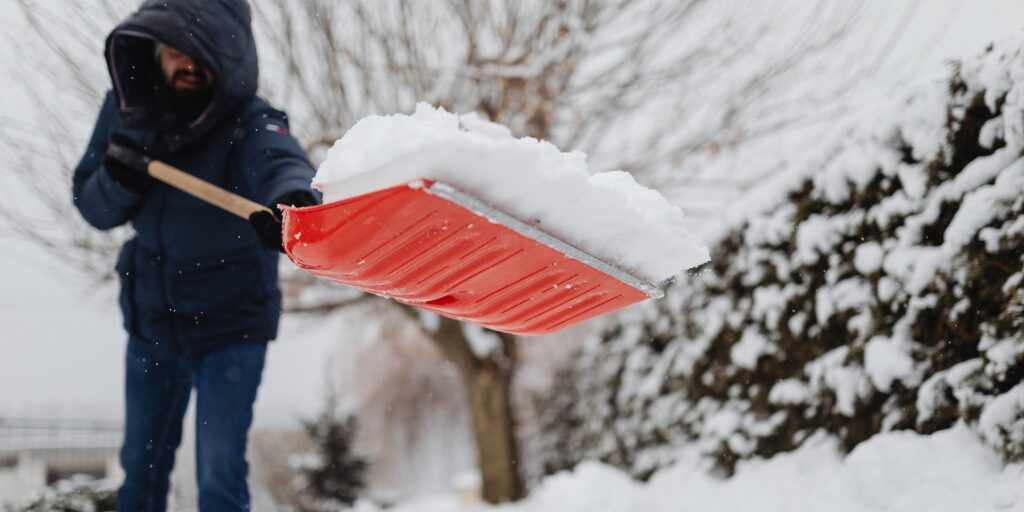- Optional coverage is the wrong way to cut insurance rates - April 22, 2024
- A primer on successfully claiming LTD benefits in Ontario - March 18, 2024
- Clear your sidewalks after a snowfall or you could face liability - February 7, 2024
By Paul Russell, LegalMatters Staff • Much of Ontario has experienced little snowfall so far this winter but that could change in February, which is why residents must keep snow shovels and salt handy, says Ontario personal injury lawyer Joshua Goldberg.
“While bylaws vary depending on the municipality, homeowners are typically responsible for clearing snow and ice from municipal-owned sidewalks that adjoin their property,” says Goldberg, principal of Joshua Goldberg Law.
He says homeowners or those who occupy the property owe a duty of care to ensure that entering or passing by is reasonably hazard-free.
“If your driveway and walkways are slippery, you are required to take reasonable steps to make them as safe as possible,” Goldberg tells LegalMattersCanada.ca. “The failure to do so may result in liability for damages if someone is injured because of your negligence.”
Check your municipal bylaws
The rules governing sidewalk clearing vary across Ontario, as do the fines for non-compliance.
- In Toronto, if accumulation is two cm or less it is up to residents and businesses to clear their sidewalks within 12 hours of the end of a snowfall. City crews are to handle the clearing if more than two centimetres fall or when icy conditions dictate. If a Toronto property owner or occupiers neglect to shovel, the city can issue a fine of $105 and a $30 surcharge.
- In Vaughan, the maximum fine for not shovelling is $500. Clearing “must be done as soon as a snowfall has ended to ensure the community can walk safely on a clear path, without fear of slipping on ice or snow.”
- In Brampton, residents have until 11 a.m. on the day after a snowfall to clear the sidewalk. According to a news article, those who do not comply face a fine of up to $2,000 plus they may also have to pay to have a “city contractor remove the snow.”
- In Kitchener, “you have 24 hours to shovel your sidewalks to bare pavement,” the city warns. if a bylaw office sees a sidewalk covered in snow or ice, “they will issue one warning,” a news article states. “They will return within a day and if it still hasn’t been cleared, the city will shovel or plow it and the property owner will be billed $400 for the work.”
“In any Ontario municipality, the Ontario Highway Traffic Act makes it illegal to shovel snow and ice onto the road,” says Goldberg. “That includes any contractor that has been hired to clear laneways or walkways.”
He adds that homeowners are also responsible for clearing snow away from any fire hydrant on their property, as directed by Ontario’s Fire Code and municipal bylaws.
Municipalities are ultimately liable for slip and falls
Though homeowners can be fined for not clearing their sidewalks, the municipality is ultimately liable for most injuries that occur because of ice or snow on the sidewalk, says Goldberg, citing Ontario’s Occupiers’ Liability Act (OLA)
“There are exceptions to that rule,” he says, “especially if the actions of the occupant of the home created the hazard on the sidewalk.”
- Social media images can be used as evidence, ruling shows
- Your auto insurance policy is not as simple as it seems
- Pedestrian/auto accidents spike after a return to Standard Time
Goldberg gives the example of someone directing the downspout from the eavestrough toward the sidewalk, resulting in water pooling and freezing in the winter.
“In that case, the homeowner could be sued if someone slips and falls on the ice, which would not have been there if not for the downspout placement,” he says.
Snow is in the forecast
The mild temperatures that much of Ontario experienced in January will not stay with us, say meteorologists.
“The upcoming winter season will deliver some curveballs that will set this winter apart from typical strong El Niño winters, states the Weather Network. “A stretch from the eastern Prairies to Atlantic Canada – including Ontario – is expected to experience brutal conditions [that] could get even worse in February.
The agency says that southern Ontario, in particular, is one region to watch this year, warning of “a sharp gradient between below-normal and above-normal precipitation.”
The Old Farmers Almanac agrees, noting there will be periods of rain and snow from Feb. 13 to 29, with higher-than-average precipitation across the province.
“If and when that happens, be a good neighbour and clear your ice and snow and watch out for hazardous conditions when you are walking,” says Goldberg.
Legal actions can be launched
He says that the OLA provides slip-and-fall victims the right to hold property owners and occupiers financially responsible for accidents that occur because of hazards.
“Determining who is at fault for injuries that occur on a snow or ice-covered sidewalk requires a consideration of many factors,” says Goldberg. “If you slip and fall while walking, or if someone claims they suffered an injury on a sidewalk adjacent to your property, you should speak to a personal injury lawyer to discuss your options.”

